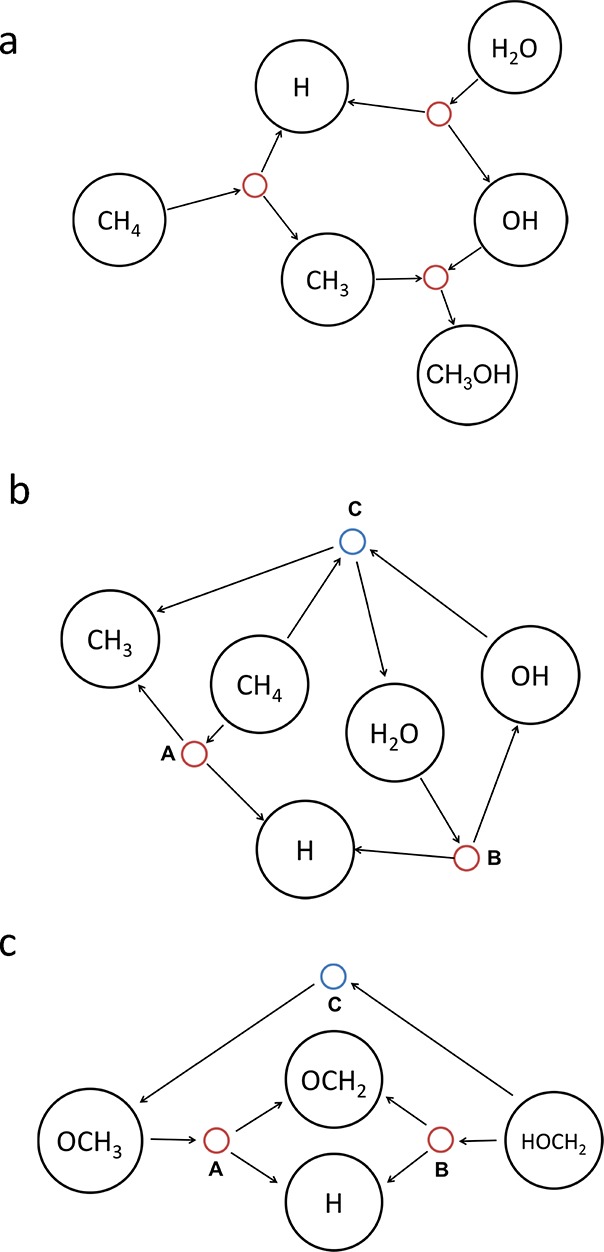Figure 3.

(a) Simple reaction network as a directed bipartite graph. Large nodes represent molecules, and small nodes represent reactions. (b) Transfer reactions can be derived from combinations of bond-breaking reactions. In this case, the dissociation of methane into the methyl radical and atomic hydrogen (A) and the dissociation of water into the hydroxyl radical and atomic hydrogen (B) are combined to define a new reaction (C), in which methane reacts with the hydroxyl radical to form the methyl radical and water. (c) Derivation of rearrangement reactions from G0. Both the oxygen-centered methoxy radical and the carbon-centered methanol radical can dissociate into formaldehyde and atomic hydrogen (reactions A and B, respectively). As reactions A and B share both products, a new reaction (C) can be defined, in which the methoxy radical rearranges to the (carbon-centered) methanol radical.
